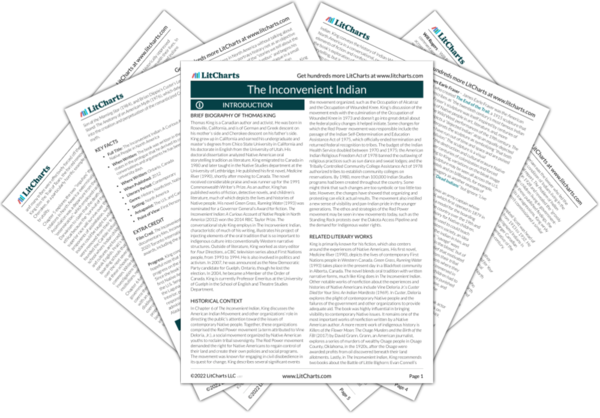King suggests that Whites tend to keep Dead Indian imagery around because it comforts or benefits them. On the other hand, North Americans exile Live Indians to reservations. Whereas Whites don’t need anything from Live Indians, King suggests, Live Indians
do need things from Whites: the return of their land, government assistance, and sovereignty. But these are all things that the broader American culture isn’t willing to reckon with. To that end, Deloria insinuates that Whites see Indians but remain ignorant to their needs as actual people.
